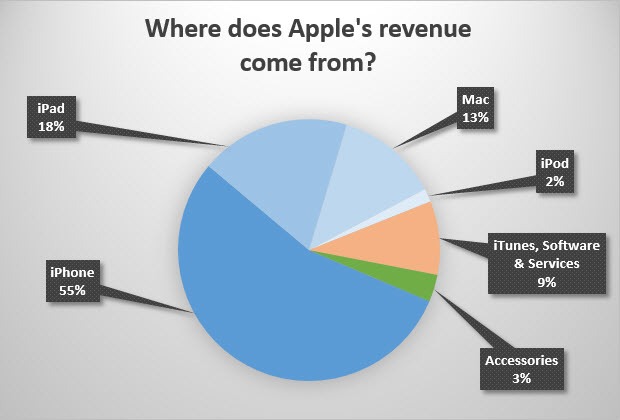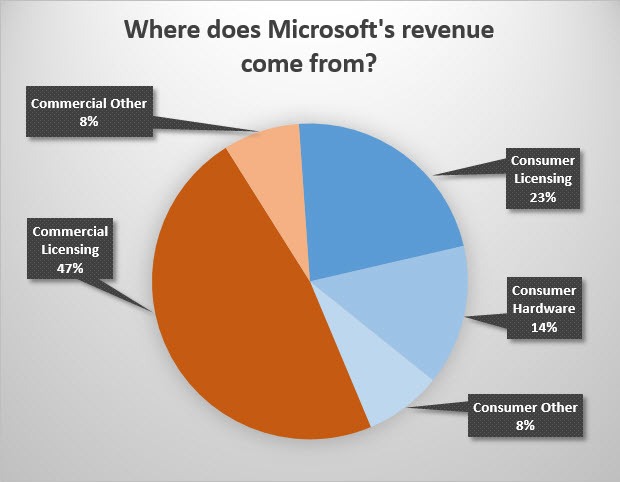(This is an elaboration of ‘How To Rule The (Real Estate) World In 10 Easy Steps’)
Until you build your listing inventory, start generating leads and handling them effectively, add staff enabling you to do more and . . . in other words: until you work through the previous 8 Steps, you really shouldn’t worry much about profitability. There probably won’t be any. But once you begin generating revenue on a regular and consistent basis, the ‘P’ word should become your obsession.
Profit is cash, profit is power, profit is longevity, profit is possibility . . .but mostly, profit is a measure of the success of your business.
Cash flow and profit are two different things. You can be unprofitable and still have cash flow, and it’s been my experience that this is the case with most real estate brokers. If you read these posts regularly you know I go on and on about how hard it is to make a true profit in the traditional real estate brokerage arena. The question becomes: if these guys are not making any money, how are they managing to hang on? The answer is cash flow. Cash flow is what you have in your checking account at the end of the month, after the bills are paid.
Profit is a paper calculation that tells you if your business is worth owning.
You get to it this way:
- Gross Revenue
- Less Cost of Sale
- Equals Net Operating Income
- Less Operating Expenses
- Equals Profit/Loss before Taxes
The Profit calculation is: Bottom Line (Profit/Loss before Taxes), divided by Top Line (Gross Revenue). The answer is a percent.
The question is: what is reasonable? What should we all be shooting for? There is no pat answer for that, not in the real estate business or any other business. Before you can even begin to pick a target, you have to give definition to the process of arriving at the Bottom Line. Let’s do that here, starting at the top with Gross Revenue.
Step one is to subtract ‘Costs of Sale.’ These are expenses that are triggered by the production of Revenue. When you generate dollars to the top line, some get diverted to cover standard obligations that occur every time Revenue is generated. The obvious one is Franchise Royalties. You have a closing and the franchisee fee comes right off the top; in fact many offices have that Royalty check cut right at closing so they never actually deposit the money into their accounts. Hawaii has a 4% Value Added Tax that applies to real estate commissions (I guess the Value Added is that you get to sell real estate in Hawaii!). That’s a cost of sale. Anytime we ‘split’ commissions with an agent, their portion is a Cost of Sale. Why do we segment Costs of Sale out from other expenses? Generally, because they are beyond our control: they are an obligation that we cannot manage like we do Operating Expenses.
Operating Expenses are the standard expenses you’d expect: Rent, Utilities, Communication, Technology, Marketing and so on. Your task as a business owner is to manage these items so that you get the biggest bang for your buck in each category. Maybe you’re spending $500 a month on Communication (mostly phones) and you find a new system that costs $400 a month without compromising the level of service and dependability you currently enjoy. When you switch to the new system, you’re managing expenses. Note, ‘managing expenses’ does not necessarily mean opting for the least expensive choice. It’s about getting an acceptable level of service and performance for the least amount of money. The biggest variable in the Operating Expense category is Marketing and as a real estate broker you must constantly be tracking your marketing dollars and evaluating the results they produce. It costs less to Market real estate today than it did five years ago. The effectiveness of the Internet to produce leads has given it center stage over things like newspaper advertising, and it is generally less expensive than older media. It can require a greater time commitment from the broker.
Once we consider all of the standard expenses required to operate your real estate business, it’s time to examine the expenses we most often forget. These usually have to do with compensating YOU for your contribution to the business. It’s important to acknowledge that you probably have several functions in the company. First, you’re an Investor. You put up a certain amount of cash to have your company and keep it operating. As an Investor, you expect a Return On Investment. What’s reasonable? You could have put your cash in a passbook savings account and gotten a secure 1 1/2% or so. Or you could have put into very risky penny stocks and hoped to get 15% or more (if you’re very lucky). Your real estate business falls somewhere in the middle. I’d suggest you build in 5 -8% of the amount you have invested as Return on Investment. If you have $100,000 invested in the company, you might expect, say, $6,000 a year as a return: $500 a month. Will you cut yourself a check every month for that? In a perfect world, yes. In a practical word, probably not. But you will consider it when you calculate the profitability of your company or the result will be an untrue profit.
Your second role in the company is Manager. You manage people, you manage expenses, you manage marketing: You are a Manager. What would you have to pay someone else to do all of the Management jobs you do in the office? Don’t answer that. Just remember that you are doing work when you Manage your company and it’s work for which you should be compensated. Here’s where I’d fudge a little bit. I’d build in about $3,000 a month for Management, regardless of whether you ever cut the check. It’s probably less than you’d have to pay someone else, but it acknowledges the reality that there is a value to your time and expertise.
Your thrird role is probably that of Salesperson. You do sell real estate and you should be compensated for selling just as you’d compensate any other salesperson. This is a little tricky in Help-U-Sell because we have taken the revenue from set fee listings sold and allocated it to ‘The Company.’ We’ve decided that the Company generates listing leads through Marketing, the Listing Consultation should be a n0-brainier because of our great consumer offering and we manage our listings with office systems. No Salesperson is required. Therefore, you may choose not to compensate yourself for listings you take. You may consider that to be a Management function. But Buyer sides are different. Here you really are functioning as Salesperson and you should be compensating your self just as you would any other Salesperson. If you split is 50%, you need to allocate that amount to yourself every time you have a Buyer side transaction. Here I’d suggest you do cut a check, but if you don’t — if you elect instead to ‘leave your commissions in the company’ — you need to allocate them to that amount you have invested in the business and consider them when you calculate your Return on Investment. You’re reinvesting your personal sales commissions into the company.
Your fourth role is Entrepreneur or business owner but your compensation is not an expense. It’s that elusive Bottom Line we’ve been talking about here: Profit. What’s left after we pay all of the expenses including paying ourselves is Profit and it belongs to the Entrepreneur. The Entrepreneur gets paid last: after the Investor (you), the Manager (you), and the Salesperson (you). If you look at your company’s financial health as I’ve outlined here I expect you’ll be depressed — especially given the economic climate of 2010. However, what we’re talking about is a paper exercise that puts a measure on your company’s health. Whatever you get is a starting point. From there you can begin to do the two things that will improve your outcome: Increase Revenue and Control Expenses. So your bottom line is -3%. Ok. What are you going to do to get that to -2%? and then -1% and so on. The exercise has value all the time, but it’s probably most valuable during periods of great activity. It’s at those times that cash flow is high and it becomes easy to assume we’re making lots of profit. Evaluating your company like this is usually a sobering experience and can keep you from making poor decisions.
By the way: there’s another payoff for the Entrepreneur. It comes when the Entrepreneur exits the business, selling it to someone else. The net proceeds of that transaction — after the Investor (you) recovers the money invested in the business, is owner’s equity. It is the payoff for having developed the asset (the company) over time.
So what is a reasonable profit? If you’re breaking even (no profit) but paying yourself as outlined above, you’ve bought yourself a decent job with a possibly bright future if you plan and manage well. If you’re making 3-5%, you’re doing ok. If you’re at 10% or above (and you’re paying yourself as outlined), you are starting to have a business worth owning.



